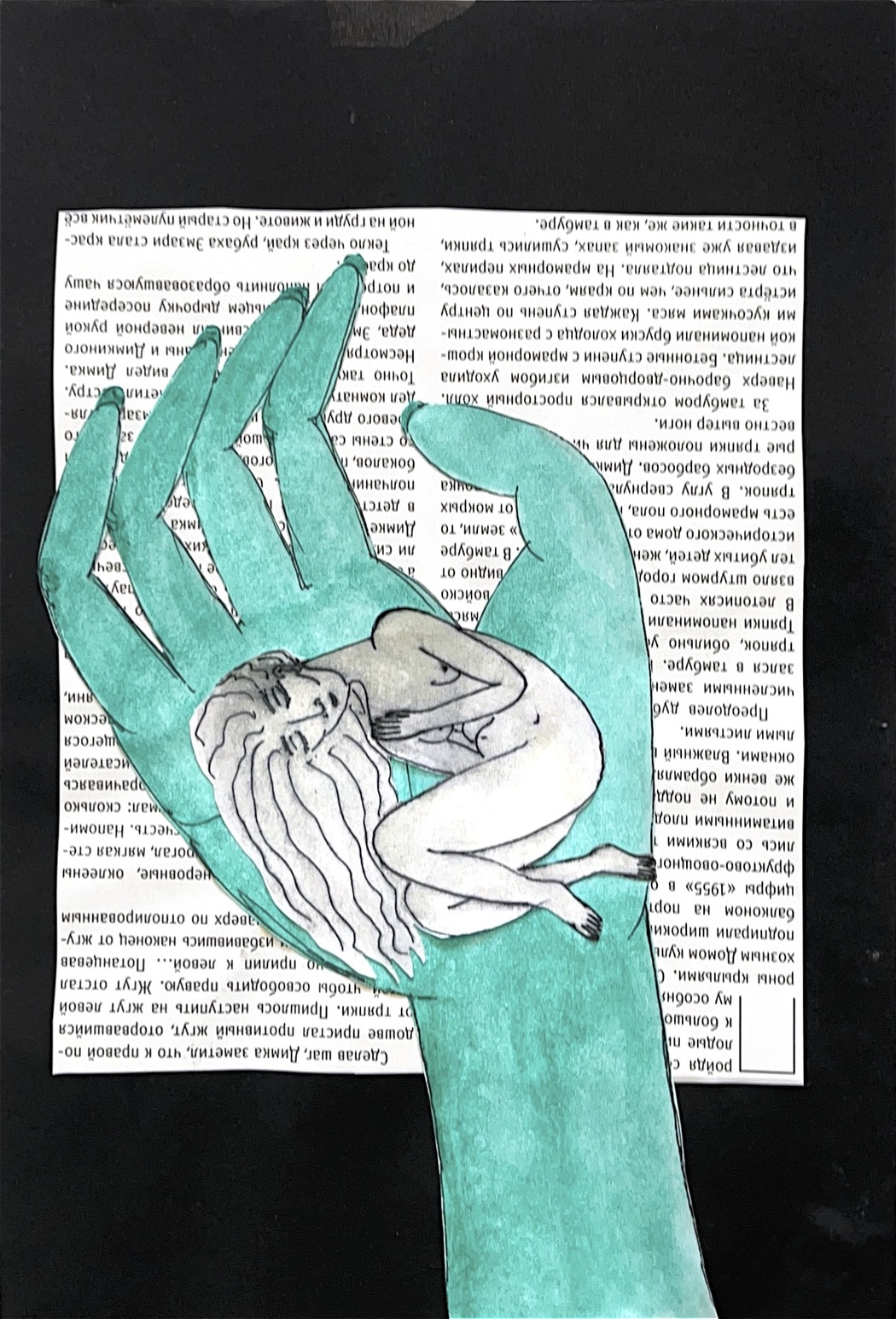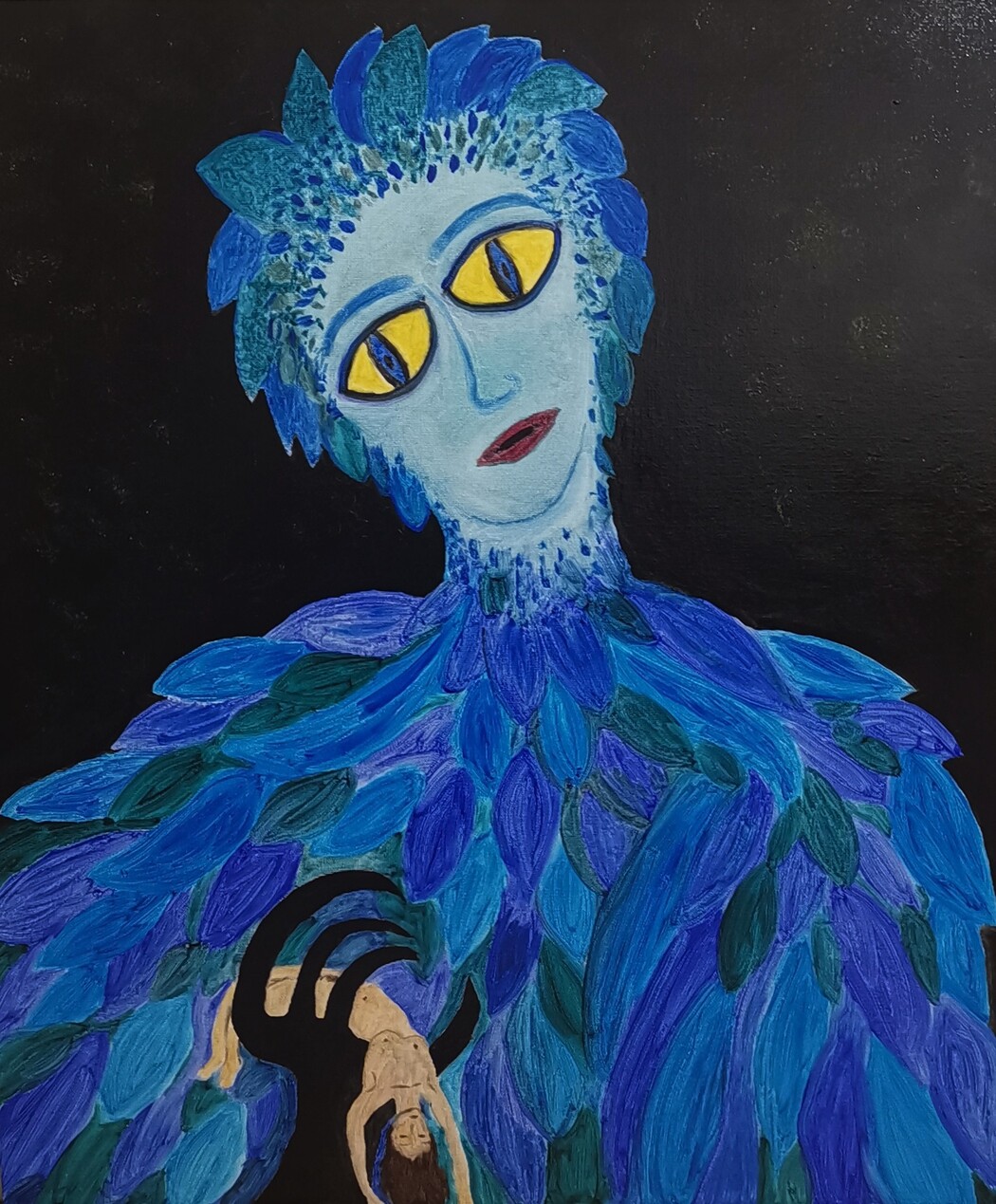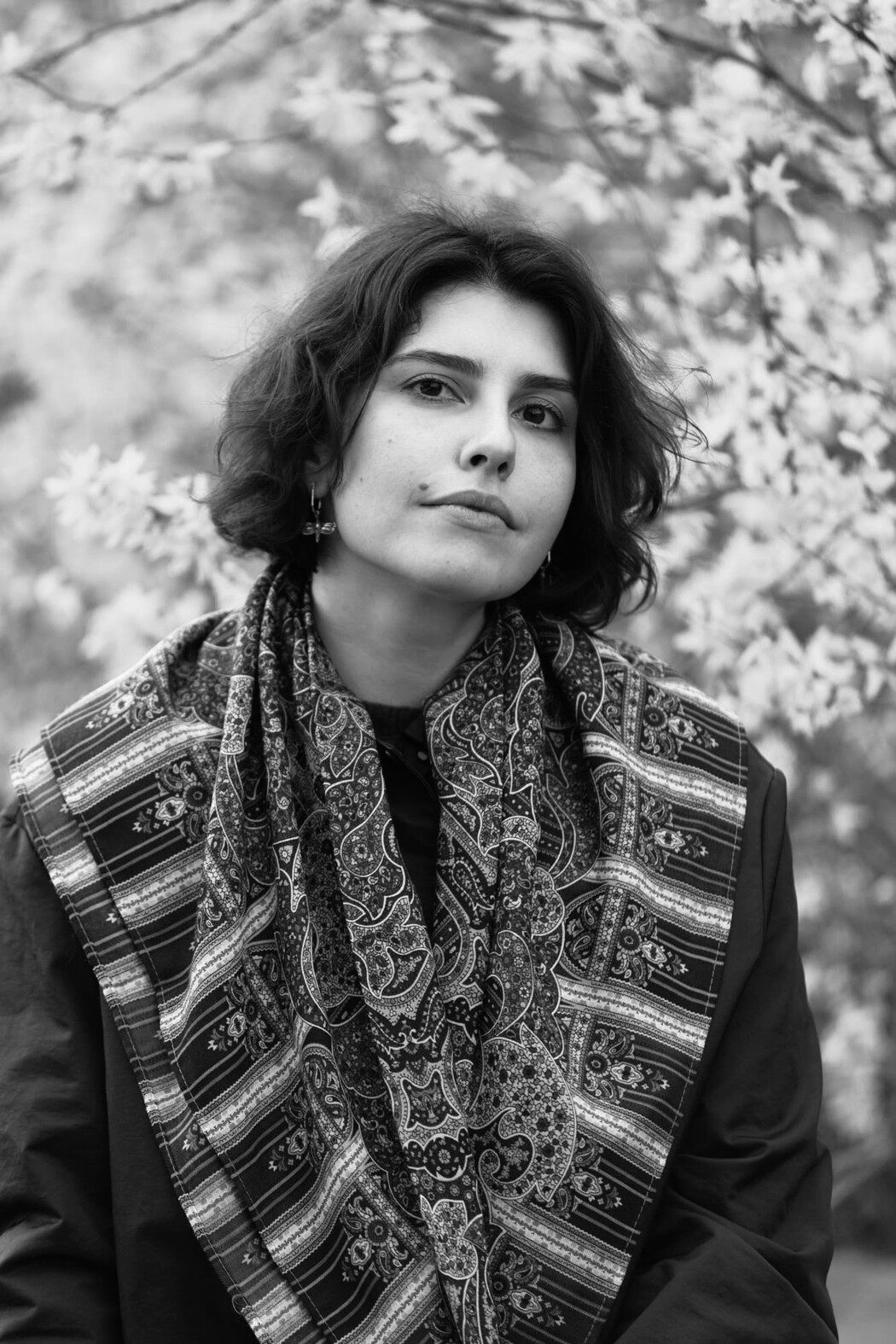Alena Trubitsina
Where do you live: London.
Your education: Goldsmiths, University of London.
Describe your art in three words: soul, search, symbol.
Website
Your work spans visual art, writing, music, and embodiment. How do you decide which medium to use when expressing a particular idea or feeling?
It often comes down to intuition—what feels right in the moment. But each medium, of course, has its own language and purpose. Visual art is best for clear, even obvious symbolism. Writing helps when something is more poetic or layered, too complex for a single image. And when something is raw, visceral, or beyond words, that’s when sound and movement come in.
As both an artist and an art psychotherapist, how do your therapeutic insights influence your creative process?
I can’t talk about this endlessly, but the main thing is probably about enlarging your inner container. At its core, artistic work is often seen as an act of expression, and therapy-awareness helps to recognise what exactly it is that we are expressing, to connect to it on a deeper level. It’s like a power to freeze time—and then to observe it, to hold it, to play with it, to explore it, to just be with it. Go deeper, find nuance, and notice details that would otherwise remain hidden.
Many of your works seem to engage with the collective unconscious. Can you share how dreams or archetypes appear in your art?
A lot of the surreal imagery in my work comes directly from my dreams and spiritual exploration. I love the feeling of turning something completely unreal into something physical. There’s something deeply satisfying—almost magical—about giving form to what once lived only in the inner world. I’m a strong believer in the equal importance of inner and outer reality, and this kind of expression feels like a way of honouring that balance—giving the inner world the same weight and presence as the outer one.
 Alena Trubitsina | Last minute of a dream | 2023
Alena Trubitsina | Last minute of a dream | 2023
What role does the body play in your visual storytelling?
As much as I value inner reality, we are physical beings — the body is both a powerful instrument and, at times, a kind of cage. It’s an enormous gift: it allows us to feel, to express, to be. All the pleasure, all the sensory richness. In many ways, having a body defines being alive. But it also carries many limitations and challenging layers of personal, cultural, and symbolic meaning attached to every part.
I’m drawn to that tension—the balance between seeking spiritual freedom while staying grounded and present in physical form.
Your use of metaphor and symbolism is very striking—how do these emerge for you during the creative process?
To be honest, they just come to me—and they’re quite hard to shake off until I make them physical. They appear in my head and follow me around until I express them in some shape or form. It’s less about intentional creation and more about listening, and then letting them out.
The emotional tone of your work often feels raw and intimate. How do you balance vulnerability and control when creating?
I try to stay as open and honest as I can. But sometimes I create something that scares me—because it feels like it might reveal too much. I wonder if people will see something I’m not ready for them to know. That’s when the need for control comes in, but most of the time I can keep it at bay. Therapy showed me that rejection isn’t as dangerous as it feels, and that if I stay true to myself, I can handle being seen.
 Alena Trubitsina | The victory of the spirit over the flesh | 2022
Alena Trubitsina | The victory of the spirit over the flesh | 2022
Has living between cultures (Russia and the UK) influenced the themes you explore?
Absolutely. The experience of immigration has been a powerful source of inspiration and personal growth. Just as therapy helps expand your inner container, living between cultures—especially in a city as diverse as London—broadens your perspective. You begin to see the world not only through the lens of your upbringing or native culture, but in its full complexity, diversity, contradiction and uncertainty, pain and beauty.
This constant exposure to different ways of being has deeply enriched how I understand human experience. It’s given me more layers to explore, both personally and creatively.


Leave a Reply